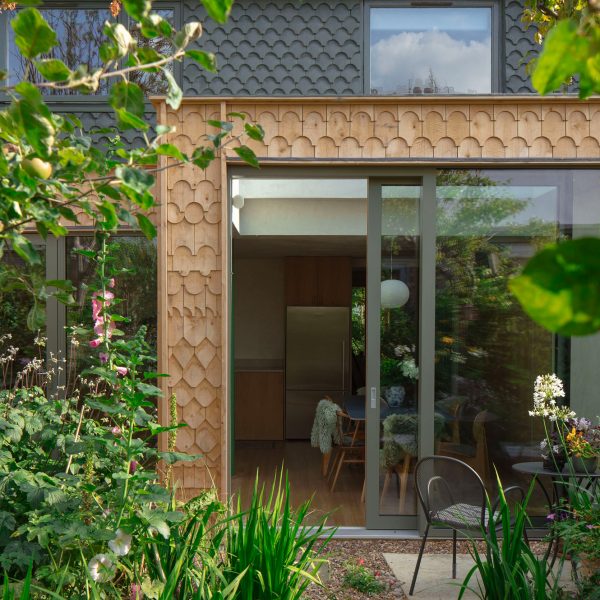Local studio The DHaus Company has combined digital fabrication with arts and crafts influences at this extension in London, which is covered in shingles in a variety of shapes.
Named Gingerbread House, the 1960s home in the north London neighbourhood of Muswell Hill was refurbished and expanded to create a new kitchen and dining area overlooking the garden.
The existing building is finished with a distinctive cladding of concrete shingles, which served as the starting point for The DHaus Company’s design.

“The first thing that caught our eyes as architects going on their first site visit was the existing facades – they were clad in a kind of concrete shingle,” explained the studio.
“We were fascinated by this architectural dress, and wanted to see if we could blend the new rear extension with the rest of the shingle house,” it added.
“When researching shingle designs, we went down a rabbit hole that led us into a wondrous place of William Morris and arts and crafts.”
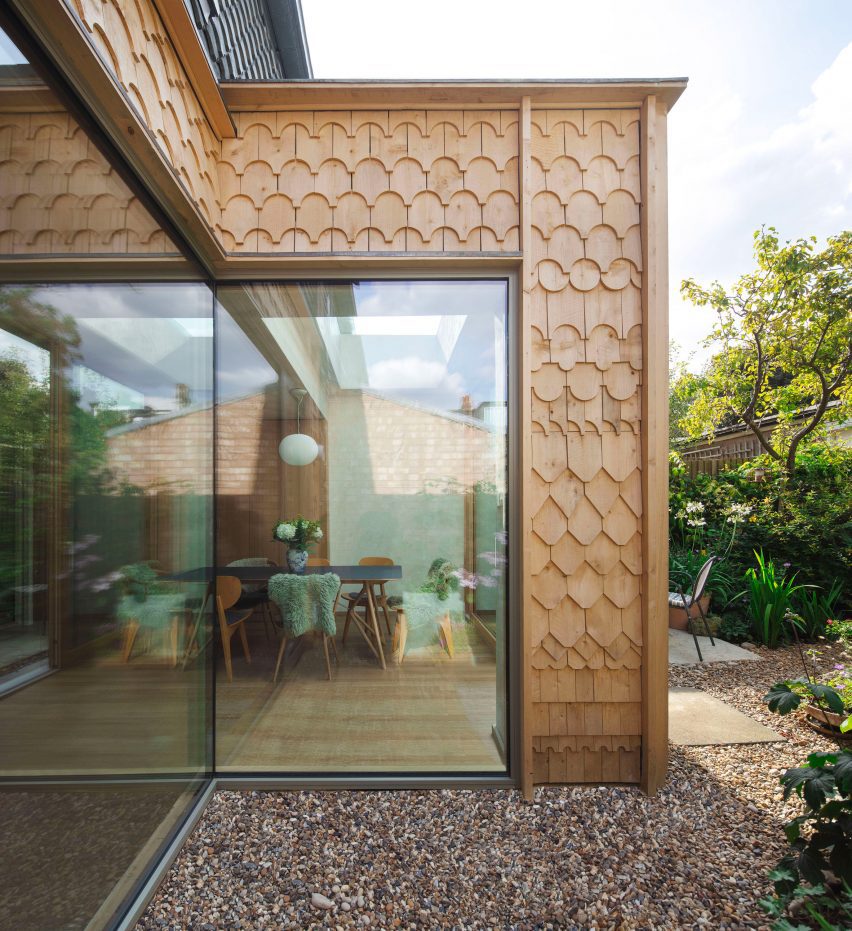
Designed to maintain a feeling of “individuality and uniqueness”, the single-storey extension is clad with CNC-cut timber shingles in a variety of curved, arched and angular shapes, some of which mirror the original home’s facades. Together they are also intended to evoke a gingerbread house, inspiring the project’s name.
“While Morris might have been sceptical of modern digital fabrication, the principles of the arts and crafts movement can indeed be compatible with contemporary digital tools,” said the studio.
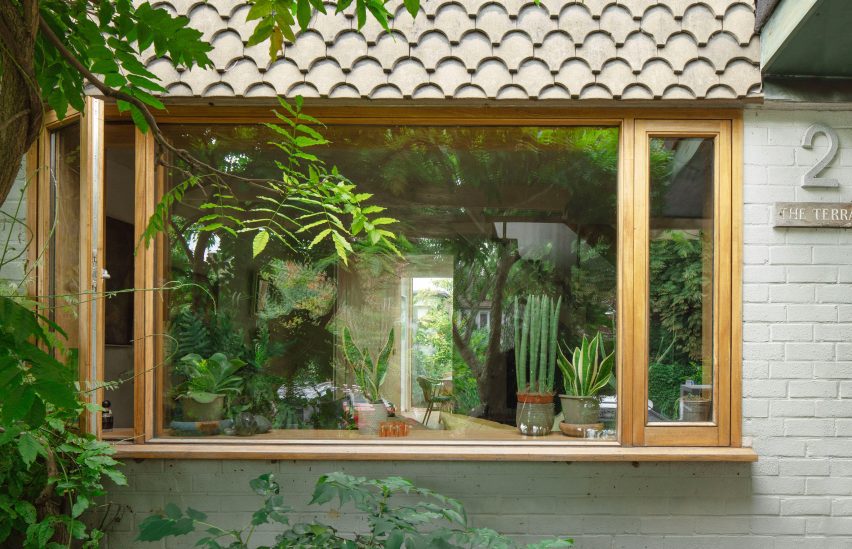
“The movement emphasised the use of high-quality, sustainable materials and ethical production practices, and digital fabrication can reduce waste through precise material use and can support local, small-scale production,” continued The DHaus Company.
“Both of which are aligned with Morris’s vision of sustainability and ethical production.”
Gingerbread House’s extension connects directly to the home’s existing reception and is centred around a skylit dining space. It overlooks the garden through full-height windows and a sliding door that leads to a small outdoor seating area.
An L-shaped glazed area creates a courtyard-like space next to the kitchen counters, where an additional door provides access out onto a gravel patio.
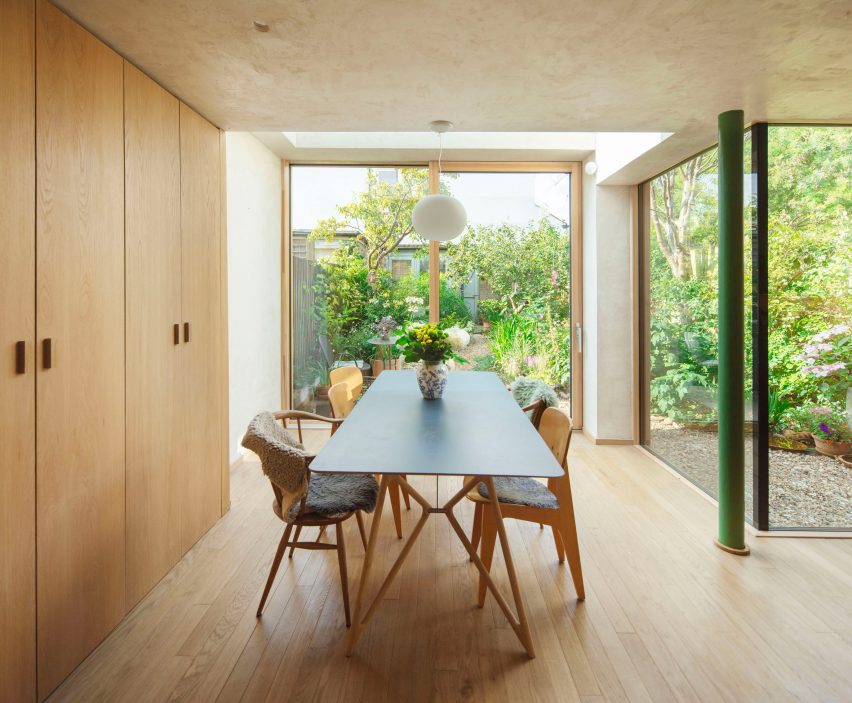
“We actually had to reduce the size of the rear extension to get the project to work financially, the extension was at the start a full-width extension going out into the garden, but we halved it, and strangely it made the project quite special,” explained founder David Ben-Grunberg.
“By making the rear extension and kitchen-dining area a kind of L shape, it meant the garden was more linked to the living space and actually this was a lovely thing to happen out of arguably something negative,” he told Dezeen.
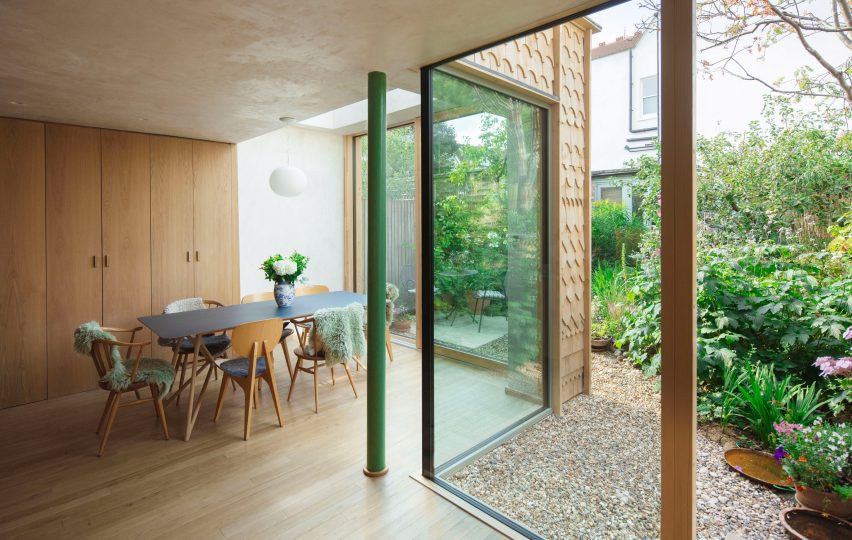
The walls and ceilings of Gingerbread House’s extension have been given a rough plastered finish, which is continued in the refurbished reception and complemented by wooden frames, furniture and built-in storage.
The energy efficiency of the home has also been improved through the introduction of underfloor heating, triple glazing and air-source heat pumps.
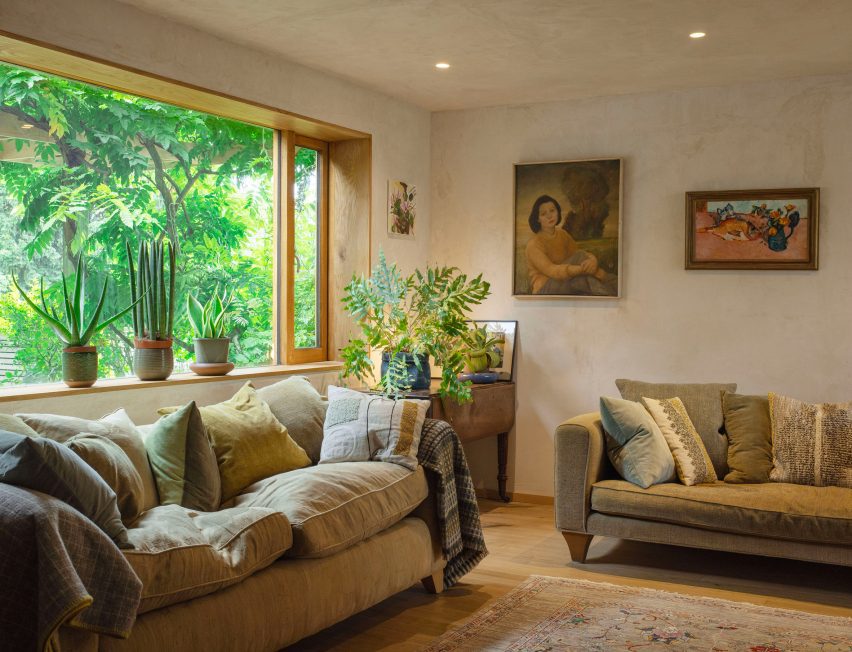
The DHaus Company was founded in 2010 by Ben-Grunberg and Daniel Woolfson.
Other projects by the studio include an extension in London that is clad in angular brickwork and a row of arched brick townhouses on the site of a former petrol station.
The photography is by Matthew White.
Project credits:
Architect: DHaus
Project architects: David Ben-Grunberg, Daniel Woolfson, Nikki Smith
Digital fabrication: Base Models
Glazing: Oakmont
Energy consultant: Bertie Dixon (Inside Outside Engineering)

